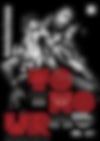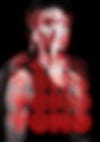
Gabrielle Thomas grew up in Te Whanganui a Tara and is of Te Atiawa Ki Te Tau Ihu, Kai Tahu and Pākehā descent.
As a member of Atamira Dance Company since 2006, Gabrielle has danced for some of NZ’s leading choreographers and has dedicated her career to Māori Contemporary Dance.
Gabrielle now lives in Te Tai Tokerau and has become a part of the local community at ONEONESIX theatre in Whangārei. Determined to make work in the regions Gabrielle began making her first independent work ŪKAIPŌ in Whangārei on a mixed generation, local cast of five wāhine Māori. The development season of ŪKAIPŌ was presented at the Puanga Matariki Festival in July 2024. It premiered at the Whangārei Fringe Festival in October 2024, winning the Best In Fringe award.
Gabrielle’s choreographies explore themes of birth, death, te ao wairua (the esoteric world) and te taiao (the natural world). These concepts which shape her world view, along with her love for toi Māori (arts), music and architecture have given her a distinctive cinematic style.
Her collaborations have been performed by Atamira in Aotearoa and abroad to places such as Canada, USA, Hawaii and Australia. Bookending the pandemic, Gabrielle’s full length work TOMO premiered in 2019 and successfully toured in 2023. In addition to the stage show Gabrielle created TOMO VR, a Virtual Reality film which was made during the pandemic and has since been presented in Auckland, Wellington, Vancouver and at SXSW Sydney where it was described as a “game changer”.
“How do you ‘choreograph’ wairua? Like this, with wisdom, clever craft and deep talent for knowing, how the shape of such things should be” - Lynne Pringle 2023

Repertoire
Tomo VR (2022)
TOMO VR is derived from a full length stage show about the whakapapa of light and darkness, birth, life and death and the dream space. This adaptation in VR tells a tale of my mother carrying twins.
A tomo is a cavernous space where we lay the bones of our ancestors. Tomo also means to enter. As you put on your headset, imagine you are entering the womb of my mother.
Within her womb - the whare tangata, you will meet three women. They represent grandmothers, mothers and daughters. They are the ancestors of two wairua (spirits) on a journey. One is travelling to the world of light and the other is travelling to the embrace of Hine Nui Te Pō, the goddess of darkness.
"Through the intimacy and attentiveness of virtual reality, you stare directly into his eyes, see the sweat dripping down his face. Three wāhine, women, appear to help the wairua on his journey into the world of light. Weaving through space, they highlight the reflective potential of each other and their tīpuna, ancestors, behind them."
- Natasha Van Etten, Theatreview

Repertoire
Tomo (2019)
Tomo tells the tale of a wairua entering the world of light. With shifting architecture Tomo interprets the proverbial hearts of three wāhine, carriers of ancient worlds, broadest horizons and greatest depths. Their inherent power holds the hidden treasures of our tupuna within and beyond the whare tangata. Gabrielle Thomas is a choreographer and dancer of Kāi Tahu and Te Atiawa te Tau Ihu descent. Her choreographies are inspired by Māori philosophies and traditional practices, mythologies and raranga (weaving) and often incorporate her personal experiences growing up. A first full-length work by choreographer Gabrielle Thomas with collaborators Peter Hobbs (music) and Vanda Karolczak (design), Tomo dives between the boundaries of light (Tama Nui Te Ra) and darkness (Te Marama) to evoke a hauntingly spellbinding experience resonating with autobiographical and ancestral memories.
"Tomo is not only an extremely dynamic piece, but also is visually stimulating to watch. There is no denying the talent that Tomo holds, offering the audience a unique Maori contemporary dance experience that took us on a journey between light and darkness to evoke a hauntingly spellbinding performance. The powerful work highlights exactly why Atamira are the leading producer of Māori Contemporary Dance in New Zealand"
Lauren Sanderson, DANZ

Repertoire
Te Waenganui - Manaia (2016)
As stated in the book The Woven Universe: Selected Writings of Rev. Māori Marsden, the whare wānanga views the world as the rhythmical moving patterns of pure energy, woven with cosmological purpose as well as design. Within carvings the manaia represents the form that can distort into various shapes, filling the empty spaces. Like a reflection, it sits between, shifting within space and time. The manaia has three fingers, forming the trinity of birth, life and death. This embodies a form that resides in more than just a singular realm. Also worn around the neck as taonga, the manaia is commonly carved out of pounamu or bone. Formed from bone and known as Manaia, the seahorse is the seer of the sea. With its thinly threaded fins all spinning, they drift like spirits through the intervening space, wearing watery bones. Our bodies are formed of skin and tissue and bone. We cannot see the wai ponapona (bone marrow) within our own living body, but does that mean it does not exist? Whakapapa brings us back to the beginning. We are threaded into the voice of existence. As we pass over, bodies falling away into bones, we transcend throughout the waters into the wai ponapona of Papatūānuku and this is Te Waenganui, the space between.
"...an incredibly beautiful commentary that explores birth, life and death; and also the various incarnations of the Manaia itself."
Dione Joseph, DANZ Magazine, 2016